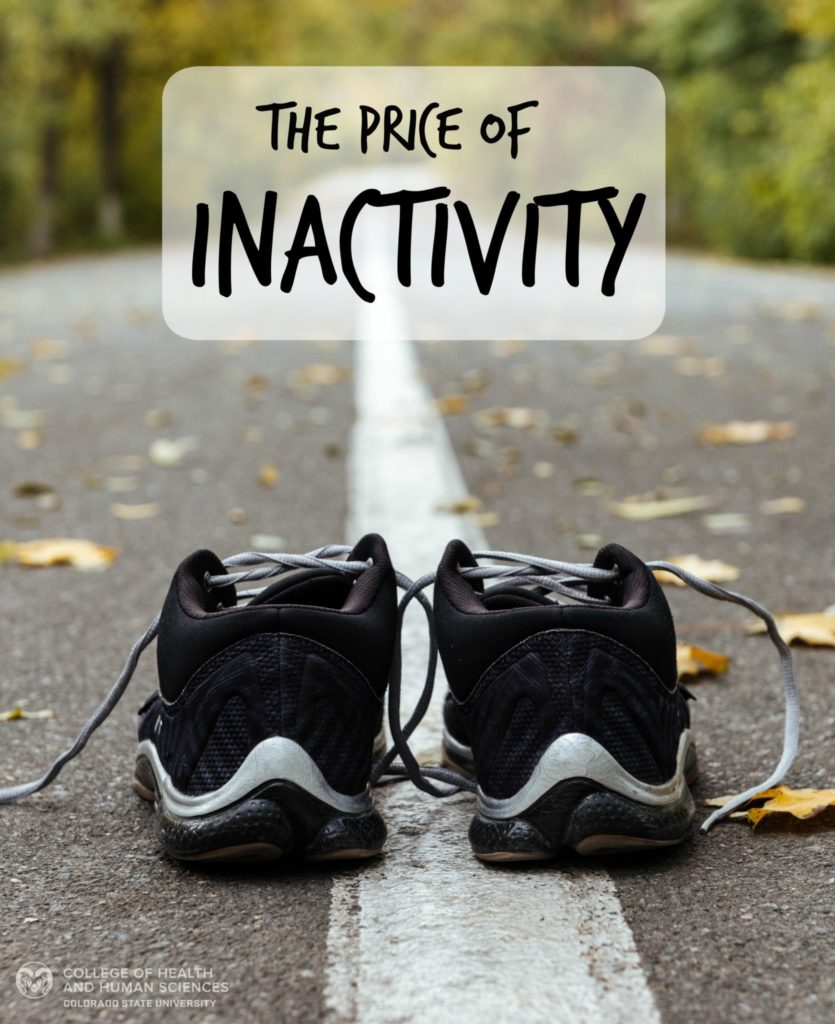It might be easy for us to think about and list the benefits of exercise. There’s the increased energy, better outlook, blood pressure regulation, maintaining or decreasing body weight, among others. But what about the cost of not being regularly active?
Sure, there’s the physical demands that change like illness and chronic disease, but we often forget that there is a financial cost that comes with those.
It pays to be active and costs to be inactive.
The cost of a sedentary life

U.S. spending on health care is the highest in the world. We spend on average $8,200/year per person, with many costs associated with the outcomes of leading a sedentary lifestyle. This lack of activity leads to an increased risk and diagnosis of many chronic conditions that could be impacted positively with regular exercise and healthy lifestyle habits. Studies show that participating in exercise programs improve overall health, lower medical costs, and increase job productivity. While all medical costs cannot be directly attributed to inactivity, there is a link.
Further, the U.S. health care system supports more of a cure model than a prevention model. A prevention model is thought to be cheaper in the long run for detecting disease and illness earlier, and provides the opportunity for insurance companies to contribute to the cost of gym memberships and facilities that help to keep patrons active and healthy.
Our current cure-focused system better supports state-of-the-art cures, clinical trials, and experimental surgeries. These do hold their own place in the health care system, but they also typically come with a heftier price tag. It’s been said the U.S. is the best place in the world to treat the sick, but we don’t always do a great job keeping people healthy in the first place. It’s estimated that 95 percent of health care spending in the U.S. is spent on treatment strategies, while the remaining 5 percent goes towards prevention.
The current burden of disease on the U.S. population is heavily contributed to by unhealthy behaviors, not just purely inactivity. In addition to inactivity, there is diet, smoking and drinking habits, and similar unhealthy activities. The risk factors most associated with chronic and behavior related diseases impact about half the U.S. population, who in turn end up accounting for upwards of 90 percent of the health care dollars spent. This further emphasizes how expensive dealing with these conditions are with half the population doing most of the spending.
So if you weren’t convinced already that going out for a 15-minute walk was a good use of time, remember it might just save you money.
Supporting material gathered from:
Hoeger, S. A., & Hoeger, W. W. (2014). Lifetime physical fitness and wellness: a personalized program(13th ed.). Australia: Brooks/Cole.
Kimberly Burke is the director of the Adult Fitness Program at Colorado State University, an outreach program through the Department of Health and Exercise Science. Adult Fitness offers exercise opportunities for employees of CSU as well as community members, while providing hands-on learning experiences for health promotion students. To learn more see http://hes.chhs.colostate.edu/outreach/adultfitness/
For more health tips, visit the College of Health and Human Sciences Pinterest board.